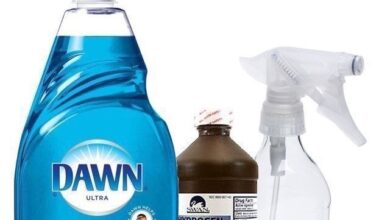Food expiration dates: What all the dates mean and if you can keep things past the ‘best by’ date

In today’s bustling world, food expiration dates serve as beacons of guidance, ensuring both the quality and safety of the foods we consume. However, deciphering these dates can sometimes feel like solving a cryptic puzzle. Fear not! This article is your definitive guide to unraveling the mysteries behind food expiration dates, empowering you to make informed decisions about the foods in your pantry and fridge.
ADVERTISEMENT
Demystifying Food Expiration Dates: A Closer Look
1. Decoding the Labels
Food products often come tagged with various expiration dates, each serving a unique purpose:
ADVERTISEMENT
- “Use By” Date: Primarily found on perishable items like dairy products, meats, and prepared foods, this date indicates the last day the product is expected to maintain peak quality. Consuming the product after this date is not recommended.
- “Best By” Date: Non-perishable items such as canned goods and dry goods flaunt this date, signifying the period during which the product is expected to retain optimal quality in terms of taste and texture. However, it can still be safe to consume beyond this date.
- “Sell By” Date: Catering more to retailers, this date aids in stock rotation. Consumers can often safely consume products after this date if stored appropriately.
2. Prolonging Shelf Life: Can You Keep Things Past the “Best By” Date?
Yes, indeed! Contrary to popular belief, you can extend the life of certain foods beyond their “best by” dates. Here’s how:
ADVERTISEMENT
- Storage Conditions: Proper storage is paramount. If stored correctly, many items remain safe and palatable past their “best by” dates.
- Visual and Sensory Evaluation: Trust your instincts! Before consuming, inspect the product for any signs of spoilage. If it looks, smells, and tastes normal, it’s likely still edible.
- Product Type: While some items like dry goods and canned foods are often safe to consume post-“best by” date, exercise caution with perishables like dairy and meats.
- Manufacturer Recommendations: Always heed any specific guidance provided by the manufacturer regarding the consumption of their products post-expiration.
3. Understanding Food Safety Beyond Expiration Dates
While expiration dates offer valuable insights, food safety encompasses more than just dates:
- Storage Protocol: Proper storage significantly influences food safety. Refrigerate perishables promptly and adhere to specific storage instructions.
- Visual and Sensory Inspection: Your senses are powerful tools in detecting spoilage. If something seems off, discard it without hesitation.
- High-Risk Foods: Raw meats and seafood require extra caution due to their susceptibility to contamination. Consume them within recommended timeframes.
- Utilizing Freezing: When facing imminent expiration, freezing can be a lifesaver. Many items can be safely preserved in the freezer for extended periods.
4. Striking a Balance: Reducing Food Waste
While prioritizing safety, let’s not forget about minimizing food waste:
- Meal Planning: Strategically plan meals to utilize perishables before they expire, saving both money and food.
- Purchase Smart: Buy perishable items in quantities proportional to your consumption habits to minimize waste.
- Shelf Life Awareness: Non-perishables often outlast their expiration dates. Trust your judgment and sensory cues to gauge their edibility.
Food expiration dates serve as helpful guides in navigating the vast world of consumables. While crucial for maintaining quality, they aren’t the sole determinants of food safety. By understanding these dates, practicing proper storage, and embracing sensory evaluation, you can confidently extend the lifespan of your favorite foods while minimizing waste.




